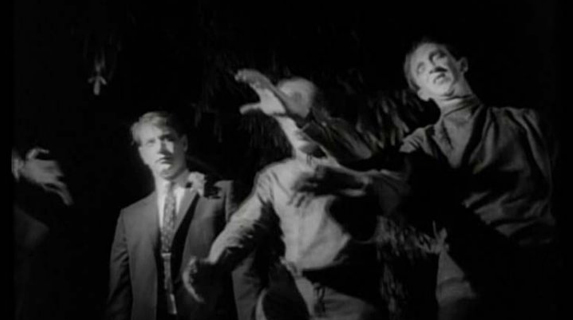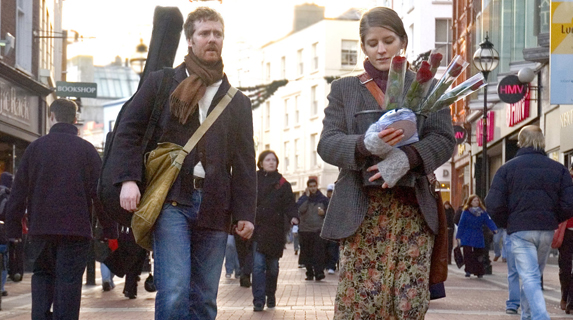Small Budget, Big Success: 10 Popular Low-Budget Films

As the Make My Movie voting round reaches its final week, I thought I’d its coattails a little longer. In keeping with the competition’s belief that tin-can budgets can breed Avatar-shaming ideas, I’m going to explore a number of ass-end funded films
The budget figures I’ve provided aren’t accurate (and they’re all probably in USD), but they’re fair approximations rounded down to the nearest shoelace.
The Blair Witch Project ($60,000)

Amongst the first wave of found-footage films (with The Last Broadcast and Man Bites Dog), The Blair Witch Project was the leading goliath. Eliminating the need for a heavy production crew tended nicely to their budget.
Why it worked:
Its popularity ascended when the filmmakers kept a straight face about whether the footage was real or not. Those believers then felt like total eff-wits when the obvious truth was revealed.
What you could do with $60,000:
Live for one year without working.
Clerks ($27,000)

Kevin Smith’s low budget baby was the hilarious start of his Hollywood rise before slowly careening down the slope of mediocrity (and for a man of his size, that momentum would be staggering). Filmed in B&W, Clerks needn’t a production studio to fulfil itself.
Why it worked:
It’s all in the script. It also helped to have a cast and crew of mainly friends and family members. Hell, the boom operator’s credited to “whoever happened to be holding the pole.”
What you could do with 27,000:
Buy a golden tin of Beluga Sturgeon caviar from the Caspian Sea.
El Mariachi ($7,000)

The b-movie gem about the mistaken mariachi was Robert Rodriguez’ low-budget baby crafted with a desire to make movies. Rodriguez pretty much was the entire filming crew, crafting the start of an eventual trilogy.
Why it worked:
The movie compensates for its lack of funds by having a wild imagination. I could tell you more, but you’re better off listening to the rad audio commentary.
What you could do with $7,000:
Buy two studio scale replicas of Serenity and play imaginary jet fighter battles. Pew pew.
Mad Max ($200,000)

Australia’s apocalyptic vision of the future was a precursor to one of the most badass sci-fi films ever made, The Road Warrior. Even then, with its meagre budget, the original Aussie punisher still managed to achieve a hell of a lot to make its world immersive.
Why it worked:
Well, when it comes to making a film set in a catastrophic wasteland, the Australian outback is the only budget you need.
What you could do with $200,000:
Pay a dude to be your online girlfriend for two-and-a-half years.
The Night of the Living Dead ($114,000)

As a filmmaker, George Romero may’ve gone a little senile as of late, but let’s never forget how he entrepreneur-ed our asses into loving the undead. Zombie love has never been as popular as it has today, bleeding out into other mediums like television (The Walking Dead), videogames (Left 4 Dead), comics (Marvel Zombies), novels (Pride and Prejudice and Zombies) and even audio dramas (We’re Alive: A Story of Survival). All this started with The Night.
Why it worked:
Two reasons: a killer concept and a reliance on predominantly one location.
What you could do with $114,000:
57,000 Cornettos.
Once ($150,000)

A low-brow modern musical about a guy and a girl (literally credited as ‘Guy’ and ‘Girl’) who are drawn together through their passion for song-writing. It won the Oscar for best original song, beating all three of Disney’s Encharted entries. Shaaaaaaaaaaaaame.
Why it worked:
The budget catered to the tender story and to the musical talents of the two lead, neither of which had ever acted before.
What you could do with $150,000:
Buy a 1787 bottle of Chateau Lafite. Well, actually, you’d still be 10 grand short.
Paranormal Activity ($15,000)

The start of the wildly popular DIY horror franchise that saw its third (and easily the best) instalment this year. ParaAct’s handy-cam style proved to be a successful mixer with ghostly entities, essentially taking the Blair Witch approach and adding a crap-load of fishing wire to pull shit with.
Why it worked:
The film preyed on your imagination, taking full advantage of the corner of your eye and your interpretation of unfamiliar sounds. However, its popularity is due mostly to its ingenious marketing campaign, showing free screenings to numerous American universities.
What you could do with $15,000:
You and nine others could rent a castle for a week. I’m dead serious.
Pi ($60,000)

Darren Aronofsky’s debut feature-length paranoia-fest centred on themes he’d later revisit in the forms of Black Swan and The Wrestler (ideas about seduction, obsession and the general suckiness of life).
Why it worked:
To continue playing a broken record, the budget tended to the story. No reliance on flashy effects or big-name actors suited the 60 grand limit nicely.
What you could do with $60,000:
This.
Primer ($7,000)

Four friends/fledgling entrepreneurs, knowing that there’s something bigger and more innovative than the different error-checking devices they’ve built, wrestle over their new invention. OK, so I copied that synopsis off IMDb because I STILL haven’t seen this damn film. But gosh darn it, I’m trying people.
Why it worked:
*shrugs*
What you could do with $7,000:
Hire Rainbow’s End for one night.
Supersize Me ($65,000)

It may not be a fictional piece of storytelling, but ol’ Morgan Spurlock ran with an idea that caught the world’s attention: eating nothing but McDonalds for an entire month.
Why it worked:
Spurlock hit the right idea at the right time, catching a Western audience growing more and more concerned about obesity as an epidemic, most of whom blamed the booming fast food industry. The poor bastard made his point boldly by sacrificing his own health, with little reliance on production values.
What you could do with $65,000:
Rent an entire village. Yep, that’s right. One whole village in Brand.















